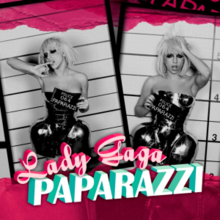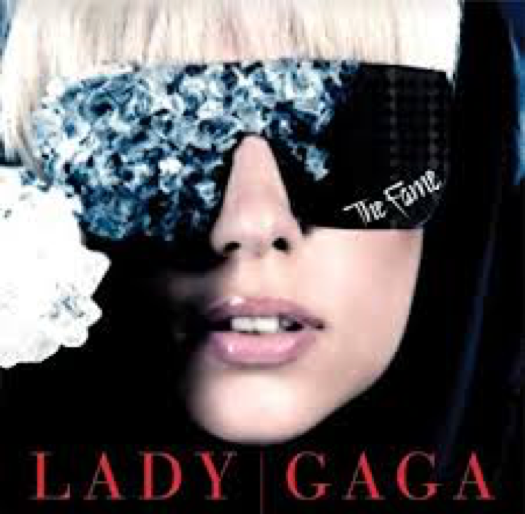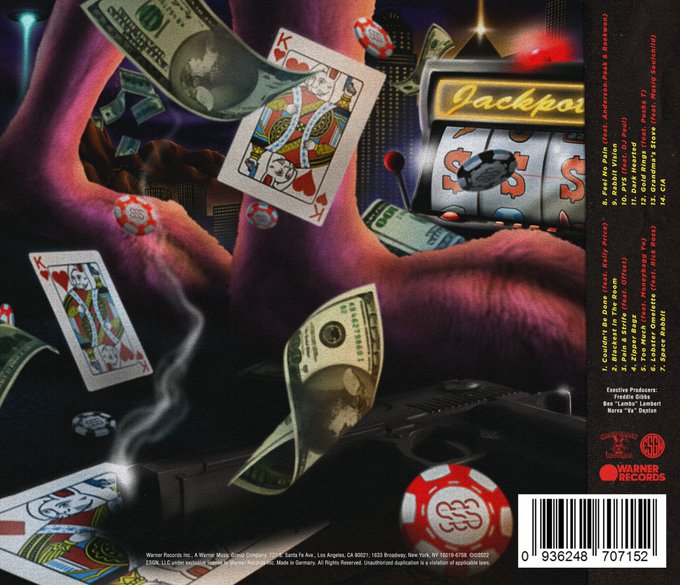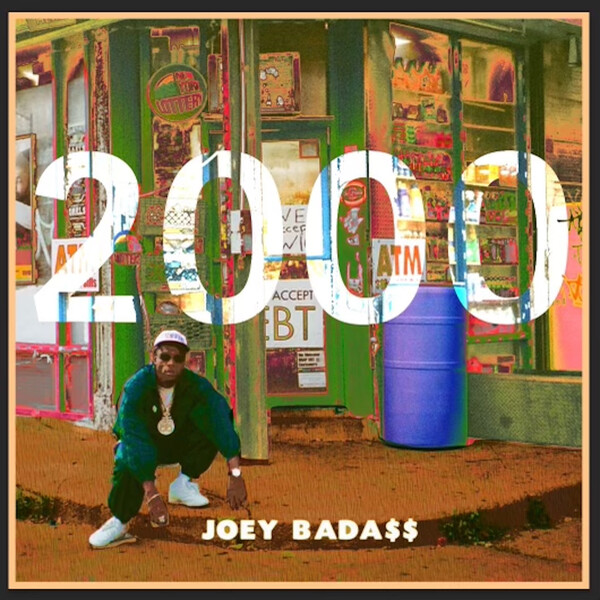By: Heather Bushman
I first heard “Just Dance” when I was around nine years old. Naturally, the alcohol-fueled, sexy club setting that the song depicts flew over my head, but I was able to draw one important conclusion: I liked the song and it made me want to dance. Our reasoning for listening to pop music may be simple, but when we want to feel good, simplicity is all we need. It’s fun, up-beat, and (pun intended) shallow. This is not to say that pop music can’t be deep or complex, but when we turn on the Top 40, we’re looking for a good time. On 2008’s The Fame, Lady Gaga gives us a good time. We’ve seen Gaga through many a concept album, controversial fashion moment, and complete persona change, and we revere her for the artistic, groundbreaking icon she is today. Despite her later works pushing the pop envelope, I believe that it is an extreme disservice to overlook Gaga’s first album when we discuss her artistry. It is a record that takes advantage of the simplicity of pop music, capitalizing on the concept of sticky and memorable choruses to appeal to audiences of all ages (nine-year-olds included).
Is The Fame the album that changed pop music as we know it? Debatable (erring on the side of “no” for me), but it certainly demonstrates Gaga’s fundamental understanding of pop music as a social construct and her ability to make the kind of music that the mainstream wants to hear.
The album opens with “Just Dance” describing a wild night of inconsequential fun, the care-free atmosphere of a club ringing clear as she reminds us to “Just Dance.” This sentiment was clearly radio-ready, as the track sold almost ten million copies (and counting). Next, “LoveGame” takes us through flirtatious encounter, with Gaga ultimately propositioning the man in question to “take a ride on his disco stick” with a tongue-in-cheek directness that characterizes the whole album.
The Fame is a sexually charged work, with Gaga approaching sex head-on and exploring the idea of a relationship with a sexual core. This transparency reflects the idea of pop music as a surface-level genre, as Gaga writes with such clarity and simplicity that, despite the playful inuendoes, every listener understands that she wants sex and she wants it now. “Paparazzi” (my personal favorite) follows Gaga depicting her unrequited love for an A-list rock star. The track is the epitome of the everything the album wants to accomplish. Gaga plays with themes of fame, desire, love, appearance, and obsession in three minutes and twenty-eight seconds, encompassing on one song the motifs present on the entire record.

“I’m your biggest fan, I’ll follow you until you love me”
This line not only describes Gaga’s relationship within the song, but also parallels the obsessive fan culture that accompanies fame, a central theme of the album record.
The lineup of singles concludes with “Poker Face”, the most lyrically abstract of the group. “Poker Face” is Gaga at her most complex. Crafting a metaphor for a sexual relationship through a card game is no easy feat, but Gaga takes the task in stride, throwing out references to Texas Hold ‘Em and Russian Roulette in a way that feels layered yet accessible. Pop appears to be a largely superficial genre (as shown on tracks like Madonna’s “Material Girl” and Ariana Grande’s “7 Rings”), and Gaga approaches this concept in songs like the album’s title track. On it, she declares that she only cares about “runway models, Cadillacs, and liquor bottles,” introducing her persona’s own shallow materialism. The rest of the deep cuts follow suit, with songs “Starstruck” and “Boys Boys Boys” touching on the carnal romanticism of the record and “Money Honey” and “Paper Gangster” covering the material side.
The track “Beautiful, Dirty, Rich” is the best way to summarize the essence of The Fame. It doesn’t really go deeper than its title implies, and it summarizes Gaga’s mission as a songwriter. We know now that incredible concept albums with nuanced writing awaited us after her debut: Born This Way gave us classic Americana imagery with a modern gothic twist, ARTPOP became the Karma Sutra of pop music, and Joanne houses some of the most personal and stripped lyrics of any record to date. Gaga’s writing throughout this record told a different story, one that didn’t showcase even half of her talent as a songwriter. The Fame’s songwriting is arguably the simplest and least polished of her career, but it is certainly indicative of a style that she would develop with each passing release: it’s quirky, clever, raw, and it’s all her own. Who else could have written “Just Dance” and “Poker Face” in ten minutes?

The anatomy of each track is consistent throughout the record, as emphasized by “Poker Face” and “Money Honey” being written in the same key and synth notes during the chorus. I wish there were more to say about the instrumental aspect of the record, but the formula repeats: the chord progression is introduced through a synthesizer, electronic bass, or piano, then the drum machine kicks in and the progression repeats. Then, the verses get the job done with one or two chords; the chorus arrives with a swell of production; the bridge plays around with the motifs established in the verses; and a final repetition of the chorus rounds out the song.
That’s pop music in a nutshell.
It’s formulaic, cut-and-dry, and manufactured above all else. However, as negative as that description may read, this is actually a testament to Gaga’s comprehension of the industry. Basic production and surface-level lyrics, while not necessarily the most interesting musical endeavors, are what the general public is most likely to understand and enjoy. Distributing work to the masses requires a certain degree of universalism, a level of simplicity that lets the record resonate with a broad audience. Gaga’s intricate musicianship in terms of production is noticeably absent here, but for good reason: she’s cracked the code of pop prowess and she’s using it as often as she can.
One of the best things about Gaga is her ability to make every record feel like its own entity. The Fame is perhaps the most branded of her discography, dedicated to perpetuating the ideals of 2008 mainstream pop: money, sex, power, materialism, obsession, fame. Even the visuals that accompany the album are as flashy as the subject matter, with outrageous premises, large dance numbers, and a ton of leather, latex, and shiny jewelry.
Though not the most complex of albums, The Fame is certainly noteworthy: a clear, cohesive, comprehensive pop idea. I like to think of the title as a sort of double entendre; the album deals with the concept of fame, but because this idea is so present in pop culture, writing about it is literally what made her famous. Let’s not forget that The Fame is her first album, and with any first album comes an enormous amount of pressure for commercial success. It is clear to us now that Gaga is capable of artistic expression that is levels above what is displayed here, but as creatively unfulfilling of a listening experience as it is in comparison to the rest of her music, Gaga’s work on this record is probably the best business decision she’s ever made. The debut, especially in pop music, functions as the industry’s first impression of the artist and the foundation of the rest of that artist’s career. The Fame, with its digestible themes, straightforward lyricism, and basic instrumentation, is a very solid first impression, one that solidified her place in the pop game and allowed for her transformation into the tour de force of creativity that we all revere today…
Soflosound.com is your one stop shop for a music fan’s music reviews, profiles, and essays. By the youth, for the youth, and allied with all oldheads, everywhere. Leave a comment below on what you want to see next!
Thank you for the piece Heather!




This article is genius. (And so is Gaga!). So many people are overly critical of pop music– but it’s fun and makes people happy, so I think it’s still valuable. Music doesn’t always have to be deep. Loved the article. 🙂